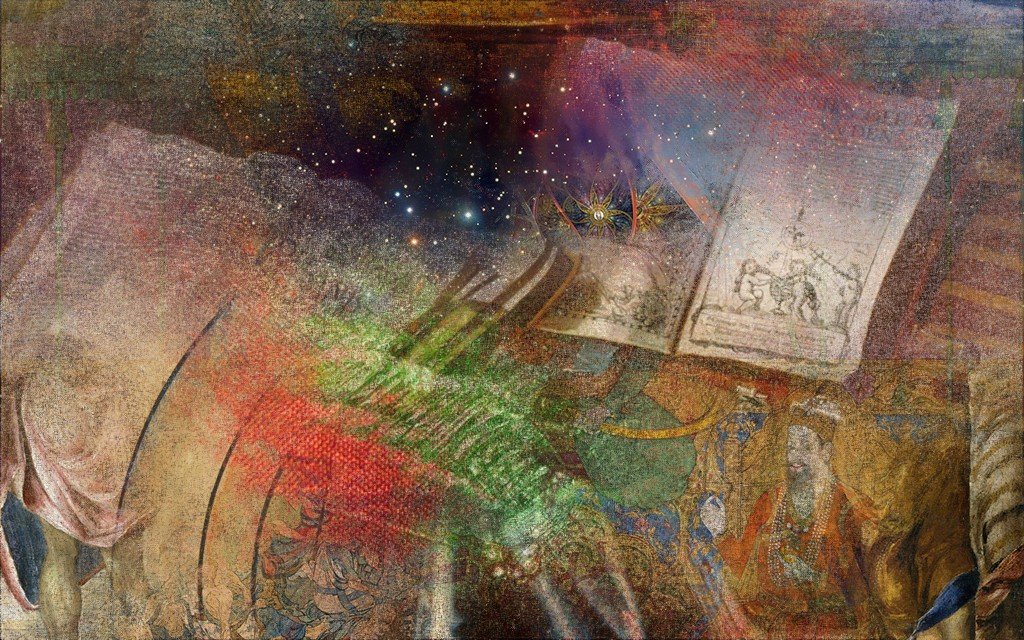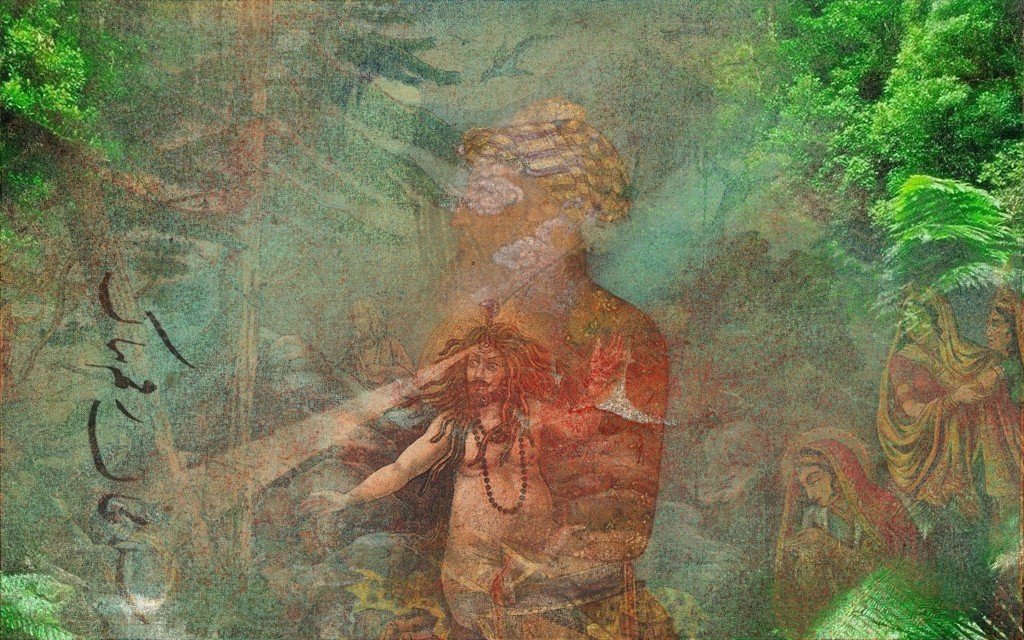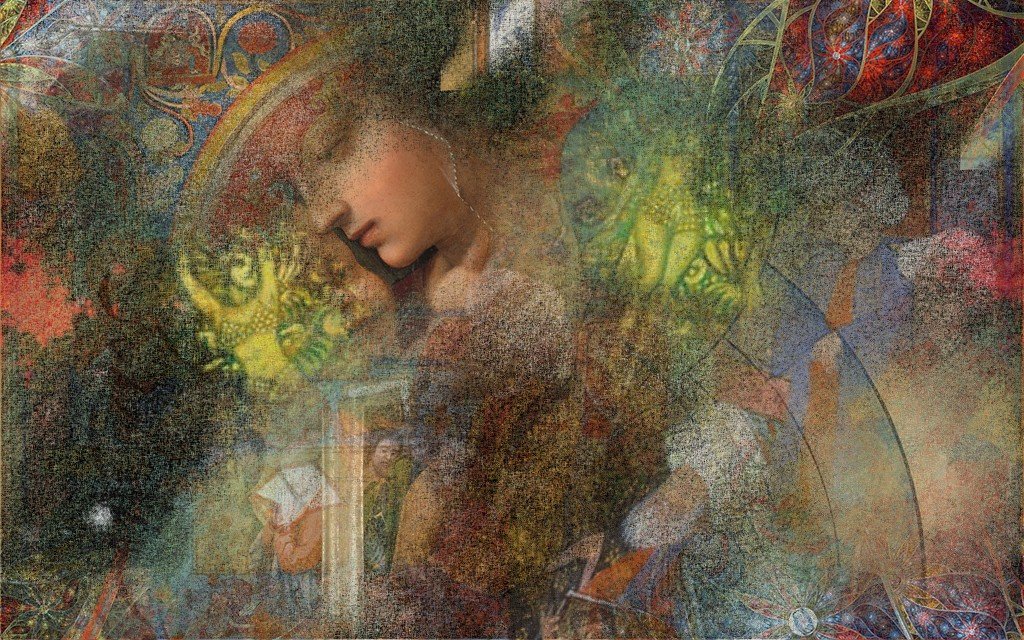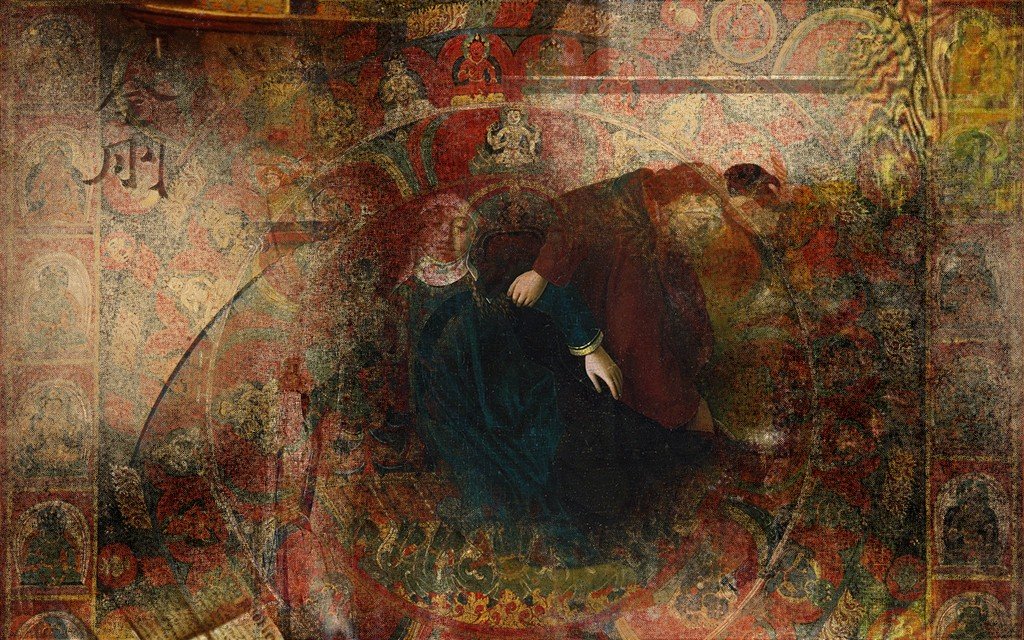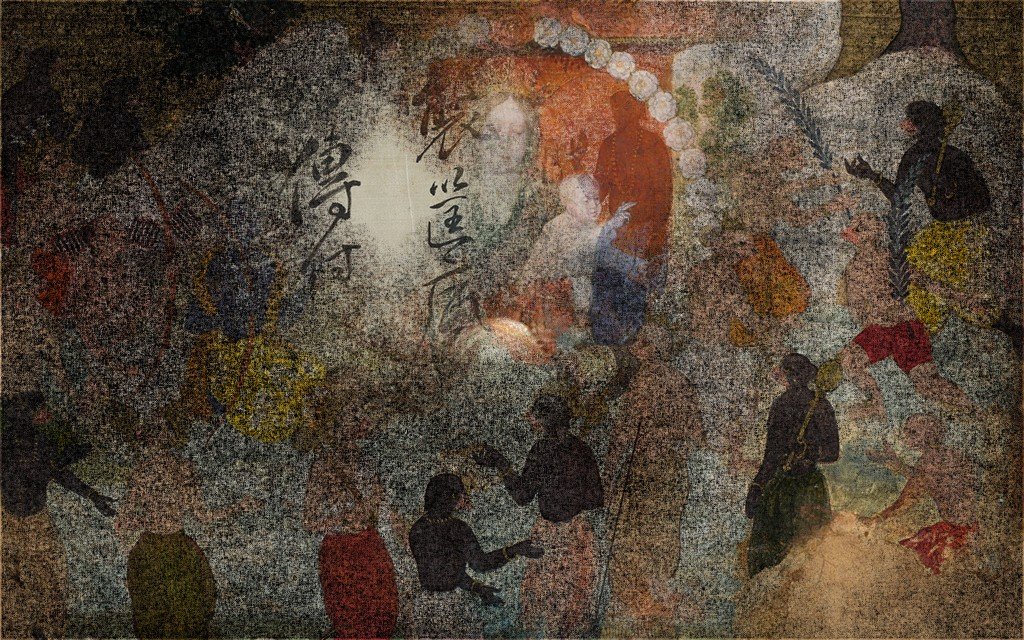PrayStation
Peace is an ideal, difficult to attain, harder to maintain. Conflicts and negotiations are tied to the finite nature of the world. Resources are limited and sharing them has caused tensions since times immemorial. With PrayStation 2, Justin Love and Philippe Pasquier explore ISEA2017’s theme through an interactive EEG-based video installation.
The piece consists in an initially empty digital canvas, a prayer dial, and an electroencephalogram (EEG) headset. The user is invited to put the headset on and select the belief system that best corresponds to its spirituality amongst the eight most popular ones: Christianity, Islam, Agnostic, Atheism, Hinduism, Chinese Folk and Confucianism, Buddhism, and Animism. The user is then invited to pray, meditate or focus. The system analyzes a user’s brainwaves for activity that is similar to praying or meditation, tracking levels of relaxation and focus [1, 2]. As the user reaches the appropriate mental state, virtual agents, a few pixels in size, appear on the canvas and start painting an iconic image representative of the chosen belief system. The more focused the user gets, the faster the agents work, the more relaxed the user gets, the larger the agents are thus impacting the canvas more.
The agents stay alive for some time trying to conquer, and convert, as much of the canvas as they can. Throughout the day, as gallery visitors try the installation and pray, a variety of agent colonies and imagery representative of the various beliefs systems chosen by the participants, will compete to conquer this large, but finite canvas.
On one level, the piece acts as a metaphor for memetic and the competition between beliefs systems. On another, PrayStation 2 is reifying prayers and gives concrete evidence of our spiritual existence, thus confirming our communion with the intangible. As such, PrayStation puts forward the idea of technology-as-placebo for spiritual or existential comfort and raises questions about the limitations of technology.
References
L. I. Aftanas and S. A. Golocheikine. Human interior and frontal midline theta and lower alpha reflect emotionally positive state and internalized attention, high-resolution EEG investigation of meditation. Neuroscience Letters, 310 (1):57-60, 2001.
N. P. Azari, J. Nickel, G. Wunderlich, M. Niedeggen, H. Hefter, L. Tellmann, H. Herzog, P. Stoerig, D. Bimbacher, and R. J. Sietz. Neurocorrelates of religious experience, European Journal of Neuroscience, 13 (8): 1649-52, 2001.
Research Papers
Aesthetics Agents: Swarm-based Non-photorealistic Rendering using Multiple Images. Justin Love, Philippe Pasquier, Steve Gibson, Brian Wyvil, George Tzanetakis. Proceedings of The seventh annual symposium on Computational Aesthetics in Graphics, Visualization, and Imaging (CAe'11), 47-54, 2011
Aesthetic Agents: a Multiagent System for Non-photorealistic Rendering with Multiple Images. Justin Love, Philippe Pasquier. Proceedings of the International Symposium on Electronic Arts (ISEA), 2011
Visual Examples
